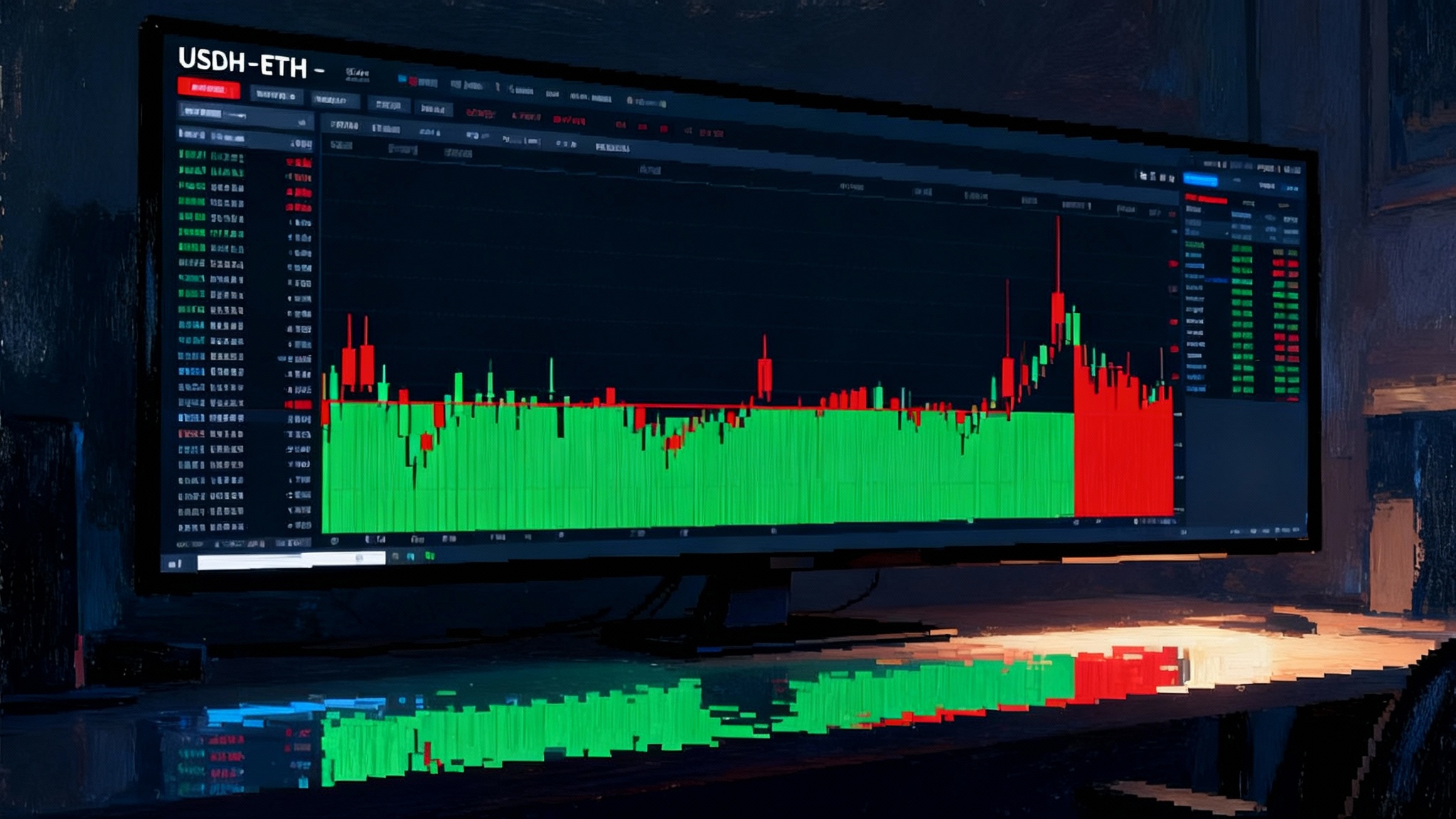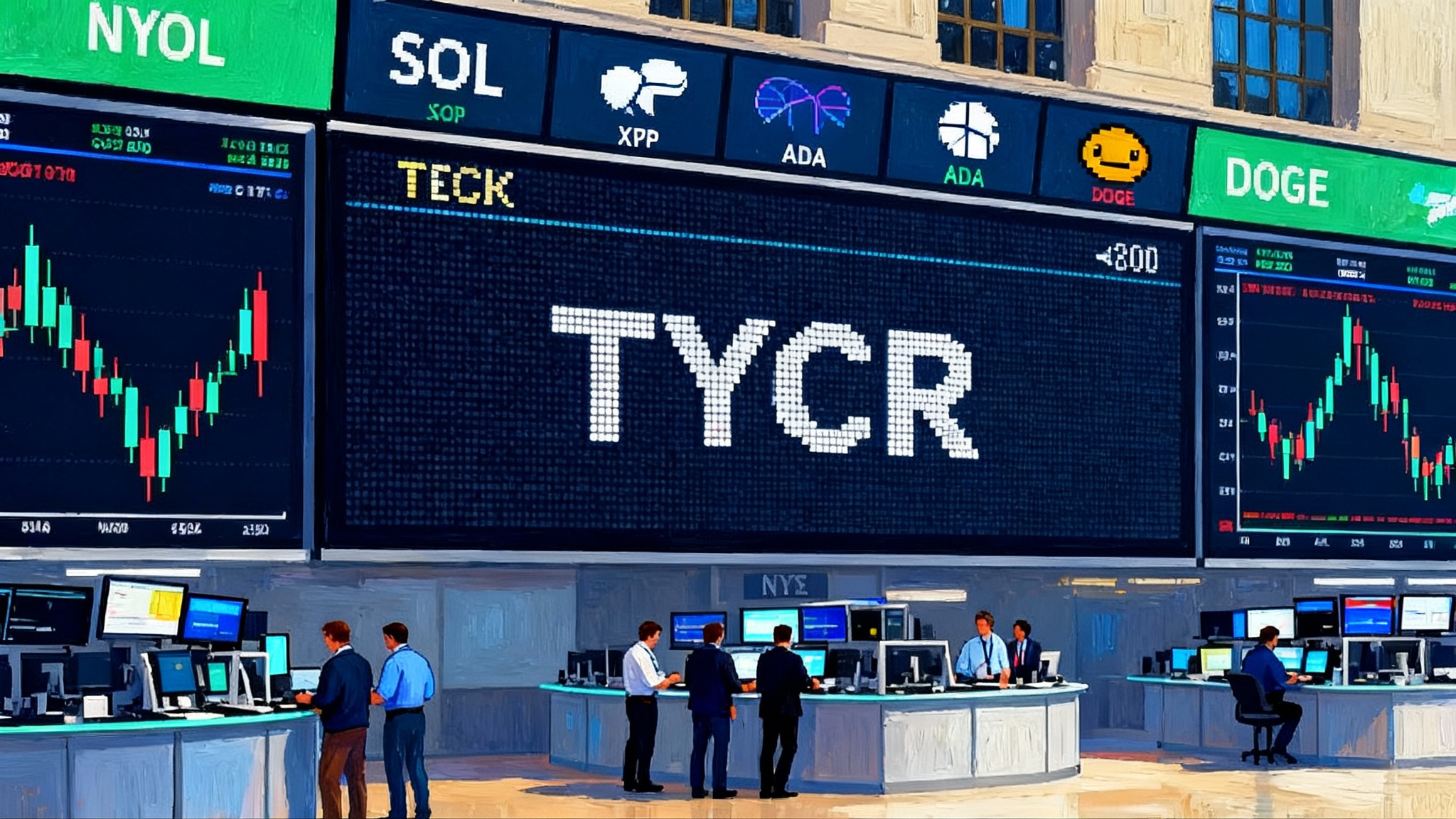USDH goes live on Hyperliquid: the DEX-native stablecoin moment
USDH just launched inside Hyperliquid’s trading stack. Here is how exchange-aligned dollars could shift liquidity from USDC and USDT, the governance that matters, and the signals to watch next.

A new kind of dollar, born inside the exchange
A stablecoin is most powerful where it settles trades. That simple idea is now being tested in the open with USDH, a dollar-pegged asset launched inside Hyperliquid’s trading ecosystem. Instead of relying on an external issuer to supply the unit of account, Hyperliquid is putting a house dollar at the core of its markets. The bet is clear: if the best price, depth, and user experience cluster around a native dollar, then order flow will follow.
This is bigger than a new ticker. It is a different alignment of incentives. When the exchange that matches orders also steers the minting pipeline, it can shape liquidity by design rather than by hope. The open question is whether that control makes the system stronger or recentralizes crypto’s most important primitive under a single venue’s governance. USDH is the first meaningful test of the DEX-native stablecoin thesis.
Why exchanges are minting their own dollars
Exchanges are the natural demand centers for stablecoins. Every quote, margin requirement, and settlement path runs through them. Yet for years, exchanges have depended on third party dollars such as USDC and USDT, which are issued elsewhere, supervised by other risk committees, and optimized for distribution across many venues. That model works, but it leaves the exchange with limited levers to improve execution quality beyond market incentives.
A native dollar changes the calculus:
- It lets the venue concentrate depth where it matters, using fee schedules, margin haircuts, and maker programs tied to the house unit of account.
- It gives the venue a direct say over reserve policy and issuer diversification, which can be tuned to the risk appetite of the exchange and its users.
- It reduces frictions between quote currency, collateral, and fees. The same asset can serve as the trading numeraire, the margin backbone, and the fee token.
- It allows the venue to capture and recycle more of the economic surplus from payment rails and reserve yields into incentives that reinforce liquidity.
For traders, the promise is tighter spreads, deeper books, and lower net costs. For the venue, the reward is stickier order flow and control over the most strategic part of the stack.
Who controls the mint: governance and issuer selection
The defining question for any venue-aligned stablecoin is not technical. It is governance. Who decides who can mint and burn at the banking perimeter, under what limits, and against which controls? How are reserves allocated across cash, T-bills, repo, or tokenized treasuries? What is the escalation path when market stress hits?
A credible model usually has three layers:
-
Policy. A transparent rulebook that defines peg objective, eligible assets, concentration limits, liquidity buffers, and stress playbooks. Policy should also define which jurisdictions and licensing regimes are acceptable for custodians and money transmitters that face users.
-
Issuer selection. Instead of a single monolithic issuer, the exchange can approve a roster of regulated entities that can create and redeem the stablecoin against fiat dollars or USDC-like assets. Each issuer has caps, reporting obligations, and a service level for redemption time and cutoffs. That spreads operational risk and reduces single point of failure.
-
On-chain enforcement and proofs. Mint and burn must be visible, quotas must be enforced by smart contracts, and reserves should be attested on a frequent cadence. The minimum bar is independent attestations plus a reserve dashboard that reconciles liabilities to assets. The better bar includes programmatic proof of reserves that link on-chain liabilities to custodied assets with clear data lineage.
Governance does not have to be a free for all. Some decisions are better held by a narrow committee with clear accountability and removal rights. What matters is that the process for adding or removing issuers is well documented, that concentration limits cannot be silently breached, and that users can see, in real time, who is responsible for what.
The incentive stack that could pull flows from USDC and USDT
For a new stablecoin to steal share from USDC and USDT, it must win the daily fight for execution quality, then keep those gains through habit. That is an incentives problem, not a branding problem. Expect a layered approach:
- Trading economics. Lower taker fees on USDH pairs, richer maker rebates paid or boosted when quoting in USDH, and priority for USDH as the base currency on new listings. Even small fee gradients move large volumes when applied to high frequency strategies.
- Margin treatment. Higher collateral value and lower haircuts for USDH on perps or portfolio margin create a real cost advantage. If USDH collateral unlocks higher leverage at the same risk score, market makers will rotate inventory.
- Funding and borrowing. Preferential rates when borrowing or lending USDH in venue-aligned money markets, plus predictable term funding for market makers that commit to keep two-sided depth.
- Settlement and fees. Using USDH for fees or settlement rebates reduces operational noise. If USDH is the path of least resistance across spot, perps, and withdrawals, it becomes the default inventory unit.
- Ecosystem integration. Grants or liquidity mining for protocols that adopt USDH as a default quote, plus routing through the venue’s cross-chain bridges or off-ramps. The more places USDH settles cleanly, the lower the exit risk for professional flows.
Incentives can be temporary, but the best ones improve the base experience. If spreads on ETH and BTC pairs are visibly tighter and depth at 10 bps is consistently larger with USDH, traders will adopt it even after rewards fade.
Reserve design: what sits behind USDH
Stability starts with reserves. Users will ask three questions on day one and every day after:
- What assets back the stablecoin now, and under what limits?
- Where are those assets held, by whom, and under what legal structure?
- How quickly can I redeem at par, and in what sizes?
A resilient design tends to include:
- Cash and T-bill core, short duration by mandate, with explicit limits on non government exposure. Tokenized treasuries are accelerating, as seen in Fidelity Treasuries on Ethereum, which informs how reserves might be structured.
- Segregated custody with multiple custodians or trust arrangements, bankruptcy-remote accounts, and daily reconciliation.
- A liquid buffer sized to meet stress redemptions without forced sales. That means more cash and overnight repo than is optimal for yield but better for peg defense.
- Clear redemption waterfalls and transparent queuing when the buffer is exhausted.
- A fee reserve that accumulates from mint, redeem, and trading economics to absorb small shocks without touching principal.
Passing through yield to end holders is a tempting lever, but it increases regulatory and product complexity. Many venue-native designs will instead recycle a portion of reserve income into market making rebates and user fee reductions. That turns reserve yield into tighter spreads rather than into cash distributions.
Four early signals to watch
If you want to judge whether USDH can become a durable category, track these signals in the first weeks and months:
-
Peg stability across venues. Watch the spread between USDH and USDC on spot and perps during volatile windows. The right metric is not just average deviation but the worst five minute and one hour windows. Stability when BTC breaks is worth ten quiet days.
-
Depth on core pairs. Check cumulative depth within 10 bps on USDH pairs for BTC and ETH. Compare to USDC pairs on the same venue. If USDH leads on depth and quoted spreads, incentives are working. If not, the market is telling you to wait.
-
Redemption mechanics. Test the off-ramp. What is the minimum size for par redemption, what are fees, and how long does settlement take from request to funds received? Are there daily caps, and do they reset promptly? Do multiple issuers respond with consistent service levels?
-
Regulatory posture. Read the issuer and custodian disclosures. Look for clarity on licensing, sanctions screening, and reporting cadence. If the structure relies on a single jurisdiction or a single bank, concentration risk is high. If the model can add issuers across several compliant regions, durability goes up. Banks piloting tokenized money, like the initiatives discussed in HSBC tokenized deposits test, set relevant precedents.
Scenarios for the next three months
-
Bullish case. USDH quickly becomes the default quote on the most traded pairs, with top of book spreads that are consistently tighter than USDC pairs. Redemption works in hours, not days. Market makers rotate inventory, and organic volume outlasts the initial reward program. Cross-venue bridges appear, and USDH trades at or inside one basis point to USDC most of the time.
-
Middle case. USDH gains share on its home venue but struggles to maintain peg discipline during stress, leading to periodic two to five basis point discounts that make risk desks hesitate. Incentives keep depth adequate, but organic adoption takes longer and concentrates in a handful of pairs.
-
Bearish case. Redemption friction, limited issuer capacity, or ambiguous disclosures reduce confidence. Liquidity remains thin beyond the top pairs, and the peg wobbles during market events. Users treat USDH as a fee and routing token rather than a true cash equivalent, and flows revert to USDC and USDT for safety.
What could go wrong
- Governance drift. If the venue can unilaterally change issuer caps, reserve composition, or redemption fees without a clear process or notice, users will price that unpredictability.
- Custodial concentration. A single bank or trust company is a single point of failure. Outages, de-risking, or regulatory action can lock up redemptions and force the peg into discounts.
- Liquidity that is only incentives deep. If depth collapses once rewards rotate, spreads widen and peg defense gets harder right when it matters most.
- Legal clarity. Stablecoin rules are evolving. If the structure is misaligned with money transmitter or e-money rules where issuers operate, redemption can be paused or restricted with little warning.
- Operational surprises. Mint and burn pipelines break at the worst times. Transparent status pages, redundant rails, and dry-run incident playbooks reduce the blast radius when something fails.
What would make DEX-aligned stablecoins durable
Durability is a bundle of boring habits:
- Publish reserve and liability data with high frequency and consistent formats. Automate it. The longer users have to wait to know, the less they will trust.
- Keep reserve risk simple and short. The first time the market hears about a structured credit exposure in a cash equivalent portfolio is the last time it trusts the peg.
- Share control with independent parties where it improves credibility. External auditors, multiple issuers, and transparent committees are not theater if they hold real keys.
- Optimize for liquidity, not yield. The thesis only works if USDT and USDC traders see better execution when they switch. Everything else is a bonus.
- Be explicit about break glass rules. Spell out what happens if a custodian freezes funds, if a regulator issues guidance that changes the rules, or if a redemption queue forms. Users will assume the worst unless told otherwise.
Playbook for builders and market makers
If you build in this stack or run books on it, there is a practical checklist for the first month:
- Quote both sides. Run USDH and USDC books on the same pairs and measure realized spread, rejection rates, and inventory carry. Let data decide where you lean.
- Stress test the peg. Intentionally cross spreads during volatile windows and see how quickly arbitrage tightens the peg. Track basis against perps.
- Map the redemption path. File a small redemption ticket and time each hop. Document cutoffs, KYC friction, and settlement confirmations. That is your worst case clock in a panic.
- Budget inventory. If USDH gets better margin treatment, resize risk and collateral accordingly. That is where the edge often lives.
- Watch the incentives sunset. Many programs step down over time. If depth holds steady as rewards taper, you are looking at real product market fit, not rented liquidity.
The bigger picture
Stablecoins are the cash layer of crypto. For years, they have been shaped by off-exchange issuers that built trust at the banking edge and then fought for adoption wherever liquidity assembled. Exchange-aligned dollars invert the process. They start where liquidity lives and work backward toward banking. For contrast with off-exchange playbooks, see Tether’s $500B stablecoin push.
USDH will either validate that inversion or highlight its limits. If the peg holds through stress, if core pairs show persistent depth advantages, and if redemption remains clean and predictable, then DEX-native stablecoins will graduate from curiosity to category. If not, the experiment will still have taught the market what users value most in their digital cash: speed, clarity, and the quiet feeling that nothing will surprise them when they need their money back.
In the meantime, watch the books, not the banners. Liquidity tells the truth first.








